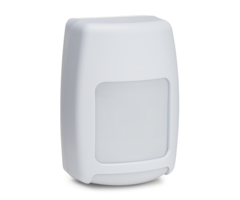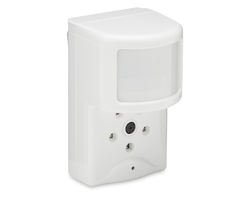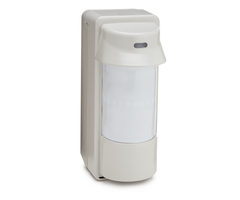Do Wireless Motion Detectors Work Through Window Glass?
Most RF motion detectors use PIR (passive infrared) technology to detect sudden changes in the infrared landscape within their field of view. An infrared signature is essentially a heat profile. The PIR sensor cannot "see" through glass because this signature cannot travel through it.
This means that, in most cases, any object moving outside a window will not trip a PIR motion detector mounted inside. Some of this depends on the type of glass used in the window. Older plate glass allows a lot more infrared energy through the glass than a modern double or triple pane window, particularly on windows that have gas between the panes to help with insulation. Even still, light from outside, traveling in through the window may "trick" the sensor by changing the infrared landscape within the motion's field of view.
For example: direct sunlight on the motion detector may cause false alarms due to the power of the sun's ability to rapidly change the IR energy seen by the motion. Still, this is only accomplished by the sun's energy traveling through the window, and therefore triggering the PIR sensor inside the glass. Movement outside the glass rarely travels inside (unless the window is broken, in which case the detector will be triggered by the subsequent motion).
Motion detectors are best suited for installation in common areas, where typical movement from an intruder requires them to cross the field of view of, rather than walk directly towards or away from, the motion. This way the intruder will pass multiple sections of the detection zone, guaranteeing that motion will be detected. If the motion is placed where someone would walk straight toward or away from it, the motion will likely still trip, but there is a higher possibility of failure.
If the user requires a window to be monitored and desires the motion detector to be installed looking at the window, the best placement of the motion detector would be on the window itself. This way, the motion picks up the area around the user's window. If the window is opened when armed, it will trigger, and if someone smashes the window and crawls through, the motion will pick up the intruder. Another option for monitoring areas with glass is to use a glass break detector.
Honeywell glass break detectors use a FlexGuard Technology that listens to the low frequency "thud" followed by the high frequency "crash" of a breaking window. It requires both sounds to trigger the glass break alarm. This gives the user a better way to determine that a window has been shattered. Earlier models were prone to false alarms, but now they are extremely dependable. Consider a glass break detector for fixed panes of glass, and general window protection for any pet owners. Pets can trigger false alarms with motion detectors, so glass breaks are a great alternative.
Did you find this answer useful?
We offer alarm monitoring as low as $10 / month
Click Here to Learn MoreRelated Products




Related Videos
Related Categories
- Wireless Motion Detecting Sensors
- Pet Friendly Motion Detecting Sensors
- Motion Detecting Sensors
- Passive Infrared Motion Detecting Sensors
- Outdoor Motion Detecting Sensors
- Honeywell 5800 Motion Detectors
- Answered




